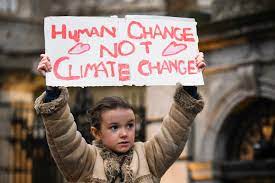Engaging Climate Action for Kids: Practical Ideas for Ages 7 to 16 to Take Part
June 29, 2023 2023-08-03 8:24Engaging Climate Action for Kids: Practical Ideas for Ages 7 to 16 to Take Part
Engaging Climate Action for Kids: Practical Ideas for Ages 7 to 16 to Take Part

Sustainable climate action requires all hands to be on deck. It is necessary now to involve and engage the younger generation.
Introduction
Climate change is one of the most pressing issues of our time, and it is essential to engage children and teenagers in taking action to protect our planet. By involving them in climate action from an early age, we can instill a sense of responsibility and empower them to make a positive impact. In this article, we will explore creative and engaging ideas for kids aged 7 to 16 to actively participate in climate action. Engaging Climate action for kids is important and requires intentionality.
Why Climate Action Matters
Climate action is crucial because our planet is facing environmental challenges such as rising temperatures, extreme weather events, and the loss of biodiversity. It is essential for kids to understand how their actions can contribute to mitigating these issues and creating a sustainable future.
Organizing Climate Awareness Events
Kids can organize awareness events in their communities, such as climate-themed art exhibitions, public talks, or film screenings. These events can help educate others about climate change and inspire them to take action.
Public Speaking and Presentations

Encourage children to develop their public speaking skills by giving presentations about climate change at school or community gatherings. This enables them to share knowledge and inspire their peers to get involved.
Reducing Single-Use Plastics
Young people can actively participate in reducing the use of single-use plastics by choosing reusable water bottles, lunch containers, and shopping bags. They can also encourage their friends and family members to do the same.
Conserving Energy at Home
Teach children about the importance of conserving energy by turning off lights and electronic devices when not in use. They can also switch to energy-efficient light bulbs and appliances, helping to reduce carbon emissions.
Recycling and Waste Reduction
Sorting and Recycling: Kids can learn about proper waste sorting and recycling practices, ensuring that recyclable materials are separated from general waste. They can actively participate in recycling programs at home, school, or local recycling centers.
Composting: Encourage children to compost organic waste, such as fruit and vegetable scraps. Composting not only reduces landfill waste but also creates nutrient-rich soil for gardening.
Conservation and Nature Preservation
Participating in Conservation Projects: Engaging kids in local conservation projects, such as cleaning up parks or planting trees, allows them to directly contribute to preserving the environment. These hands-on activities foster a sense of responsibility and connection with nature.
Exploring Wildlife and Nature
Encourage children to explore and appreciate the natural world by taking them on nature hikes, wildlife spotting, or visiting nature reserves. This helps foster a love for the environment and encourages them to protect it.
Gardening and Sustainable Food Choices
Growing a Sustainable Garden

Kids can learn about sustainable gardening practices and grow their own fruits, vegetables, or herbs. This teaches them about the importance of organic food, reducing food miles, and connecting with nature.
Making Sustainable Food Choices
Encourage children to make sustainable food choices by opting for locally sourced and seasonal produce. They can also reduce meat consumption and choose plant-based alternatives, which have a lower carbon footprint.
Energy Conservation
Monitoring and Reducing Energy Consumption
Kids can actively monitor and reduce energy consumption in their homes by turning off lights and appliances, using natural light, and adjusting thermostats to conserve energy. They can also encourage their families to invest in renewable energy sources.
Exploring Renewable Energy
Introduce children to renewable energy sources, such as solar panels or wind turbines, and explain their benefits for the environment. This can spark their interest in clean energy and inspire them to pursue careers in renewable technologies.
Water Conservation
Being Mindful of Water Usage
Teach children about the importance of conserving water by turning off taps while brushing teeth, using efficient showerheads, and fixing leaky faucets. They can also collect rainwater for watering plants, reducing the need for tap water.
Learning About Water Footprint
Educate kids about water footprints and how their daily choices can impact water usage. This awareness can inspire them to make conscious decisions and encourage others to conserve water.
Active Transportation
Choosing Sustainable Transportation
Encourage children to use sustainable modes of transportation, such as walking, cycling, or using public transportation. This reduces carbon emissions from cars and promotes a healthier lifestyle.
Organizing Bike/Walk to School Campaigns
Kids can initiate campaigns to promote biking or walking to school, reducing traffic congestion and air pollution. They can create posters, organize group activities, and raise awareness among their peers.
Community Involvement
Volunteering for Environmental Organizations
Encourage children to volunteer for local environmental organizations or participate in community clean-up events. This provides them with opportunities to contribute to larger-scale projects and make a difference in their community.
Creating Eco-Clubs
Kids can establish eco-clubs in their schools, where they can collaborate on environmental projects, host discussions, and organize events. These clubs foster teamwork and empower children to take collective action.
Advocacy and Youth Organizations
Joining Youth-Led Climate Organizations
Encourage kids to join youth-led climate organizations or participate in climate strikes and protests. This allows them to connect with like-minded individuals and raise their voices for climate justice.
Writing Letters to Representatives
Children can write letters or emails to their local representatives, urging them to support policies and initiatives that address climate change. This teaches them the power of advocacy and democratic participation.
Climate Science Education
Participating in Science Programs
Encourage them to participate in science programs focused on climate change and environmental research such as NASA’s Climate Kids and National Geographic Kids. These programs provide hands-on learning experiences and encourage a deeper understanding of climate science.
Watching Educational Documentaries
Encourage children to watch educational documentaries or participate in online courses that explain climate change in an engaging way. This broadens their knowledge and helps them become informed advocates.
Encouraging Innovation
Promoting Green Inventions
Inspire kids to think creatively and come up with green inventions or innovative solutions to address environmental challenges. Encourage them to share their ideas and collaborate with others in implementing sustainable solutions.
Participating in Science Fairs
Encourage children to participate in science fairs and showcase projects related to climate change and sustainability. This provides them with a platform to present their ideas and inspire others.
Inspiring Others
Being Climate Ambassadors
Kids can become climate ambassadors by sharing their knowledge and experiences with friends, family, and classmates. They can give presentations, create informative posters, or organize workshops to inspire others to take climate action.
Using Social Media for Good
Encourage children to utilize social media platforms to raise awareness about climate change. They can share informative posts, organize online campaigns, and engage with a wider audience to spread the message of environmental conservation.
Children who are championing climate action
Here are the names of some children who are championing climate action:
Greta Thunberg: Greta Thunberg is a Swedish environmental activist who gained international recognition for her school strike for climate action . She has inspired millions of young people worldwide to join the fight against climate change.
Licypriya Kangujam: Licypriya Kangujam is an Indian climate activist who started her climate strike at the age of eight. She has been advocating for climate action and urging governments to take stronger measures to combat climate change.
Alexandria Villaseñor: Alexandria Villaseñor is an American climate activist who co-founded the international youth-led organization Earth Uprising. She is known for her weekly climate strikes outside the United Nations headquarters in New York City.
Isra Hirsi: Isra Hirsi is a Somali-American climate activist and co-founder of the U.S. Youth Climate Strike. She has been working to mobilize young people and raise awareness about climate justice.
Ridhima Pandey: Ridhima Pandey is an Indian environmental activist who filed a petition at the age of nine demanding action from the Indian government to combat climate change. She is actively involved in advocating for stronger environmental policies.
Leah Namugerwa: Leah Namugerwa is a Ugandan climate activist who began her climate strike in 2019, inspired by Greta Thunberg. She has been leading climate protests in Uganda and raising awareness about the impact of climate change on vulnerable communities.
Mari Copeny: Mari Copeny, also known as “Little Miss Flint,” is an American activist from Flint, Michigan. She gained attention for her work to bring attention to the water crisis in Flint and has expanded her advocacy to include climate change and environmental justice.
Vanessa Nakate: Vanessa Nakate is a Ugandan climate activist who founded the Rise Up Movement to advocate for climate justice. She has been actively involved in raising awareness about the disproportionate impact of climate change on African countries.
Bruno Rodriguez: Bruno Rodriguez is a youth climate activist from Argentina who has been working to raise awareness about the importance of sustainable practices and renewable energy. He has participated in various climate events and conferences.
Holly Gillibrand: Holly Gillibrand is a Scottish climate activist who started striking for climate action in her hometown. She has been advocating for stronger climate policies and encouraging young people to get involved in the fight against climate change.
Conclusion
Engaging children and teenagers in climate action for kids is crucial for building a sustainable future. By involving them in activities that promote awareness, sustainable lifestyle choices, conservation, and advocacy, we empower them to become active participants in protecting our planet. Together, we can make a significant impact and ensure a better world for future generations.
FAQs
Q: How can I motivate my child to get involved in climate action? A: You can start by discussing the importance of environmental protection and sharing age-appropriate information. Encourage their curiosity, involve them in hands-on activities, and lead by example.
Q: Are there any online resources for kids to learn more about climate change? A: Yes, several websites and platforms offer educational resources, games, and videos tailored for kids, such as NASA’s Climate Kids and National Geographic Kids.
Q: Can children really make a difference in addressing climate change? A: Absolutely! Every action, no matter how small, contributes to the collective effort. By empowering children and providing them with the knowledge and tools, they can become change-makers.
Q: How can young people encourage their friends to join them in climate action? A: Kids can organize fun activities like eco-friendly crafts, outdoor adventures, or movie nights focused on environmental themes. They can also share their experiences and explain the positive impact of climate action.
Q: What are some books on climate change suitable for kids? A: Some recommended books include “The Watcher” by Jeanette Winter, “The Great Kapok Tree” by Lynne Cherry, and “Greta and the Giants” by Zoë Tucker. These books help children understand the importance of environmental conservation.




